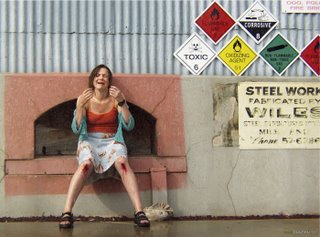Think of Frida, a superb example of paintings coming alive, depicting the plots of the story. In an almost similar way, Sarah Watt applies the same concept to her directorial outing, Look Both Ways, here. Although it is not necessarily revealing the plot, the paintings coming to live work well in representing one of the main characters’ inflicted mind.

As such, at any given moment and chances, we might be tempted to deviate our attention to the paintings, rather than the story. Yet, Watt superbly crafts her film, in a way that we couldn’t help ourselves feeling the characters’ aching for affection and their unspoken yearning for comfort. In a story consisting of three strong plots, brought together by one trigger of an incident, Watt intertwines her characters with tender treatments that by the time the end credit rolls, we will look at the big screen and thinking, that we see ourselves in them.
That’s simply a result of a good story.

No comments:
Post a Comment